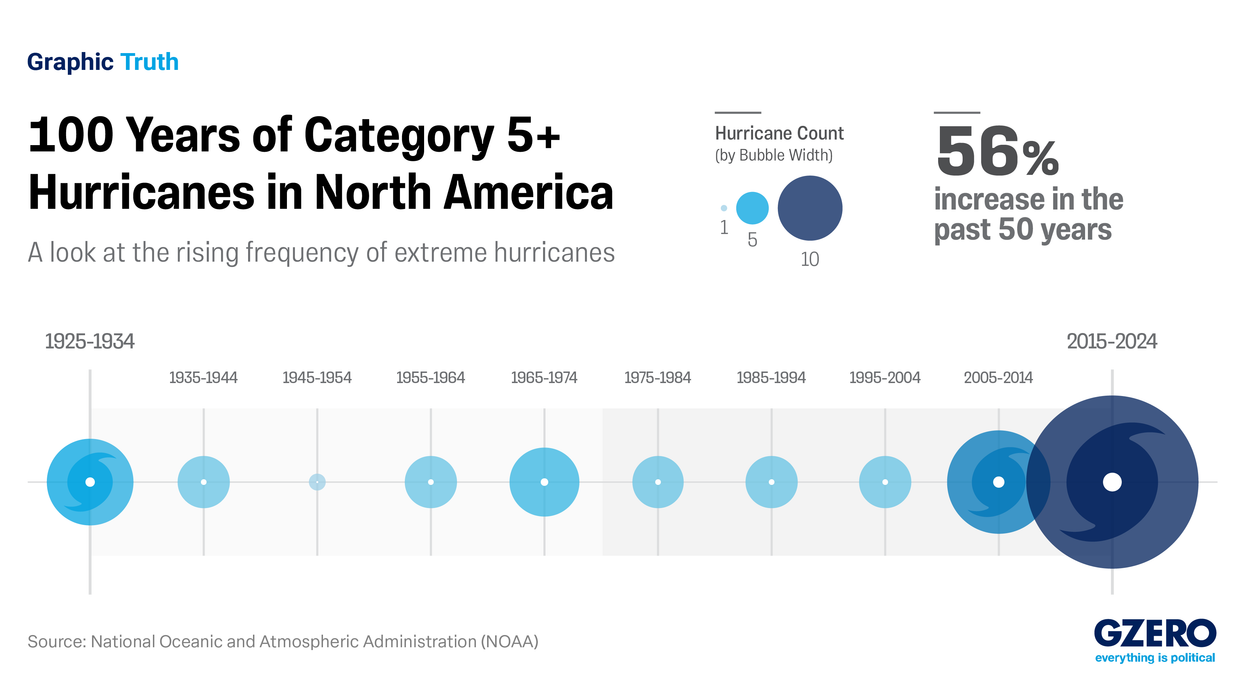Graphic Truth
Graphic Truth: 20 years since Katrina, Category 5 hurricane frequency is increasing
20 years ago, Hurricane Katrina devastated Louisiana and the Gulf Coast, killing nearly 1,400 people and destroying thousands of homes in the predominantly Black Lower 9th Ward of New Orleans.
Aug 29, 2025




